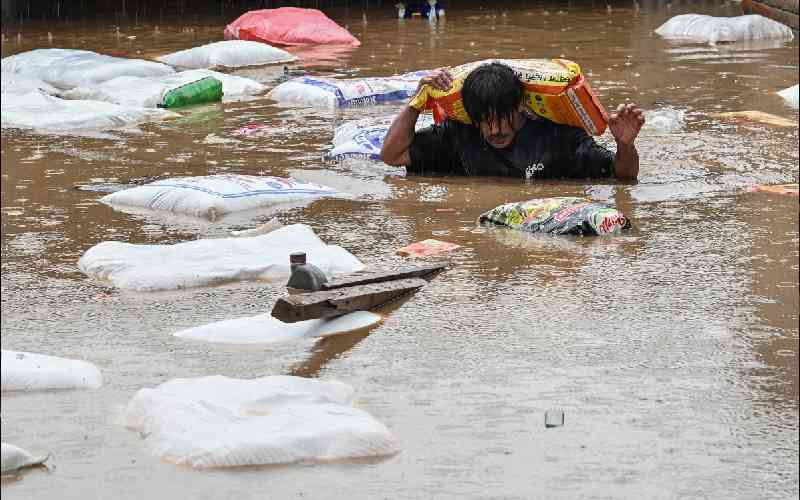
Low-lying neighbourhoods in Nepal's capital Kathmandu were inundated by surging floodwaters on Sunday after ferocious monsoon rains that police said had killed at least 101 people around the Himalayan republic.
Deadly rain-related floods and landslides are common across South Asia during the monsoon season from June to September, but experts say climate change is increasing their frequency and severity.
Large swathes of eastern and central Nepal have been inundated since Friday with flash floods reported in several rivers and extensive damage to the country's highways.
"The death toll has reached 101, and 64 people are missing," police spokesperson Dan Bahadur Karki told AFP.
"There is likely to be an increase in the death toll as our search and rescue mission proceeds in the affected areas," he added.
The Kathmandu valley recorded 240 millimetres (9.4 inches) of rain in the 24 hours to Saturday morning, the country's weather bureau told the Kathmandu Post newspaper.
It was the highest rainfall recorded in the capital since at least 1970, the report said.
The Bagmati River and its numerous tributaries which cut through Kathmandu broke their banks, inundating nearby homes and vehicles.
Residents pushed through chest-deep water to get to higher ground, with nearly 3,300 people rescued by relief teams as of Sunday morning.
More than 3,000 security personnel were deployed to assist rescue efforts with helicopters and motorboats.
Rescue teams were using rafts to pull survivors to safety.
Landslides have blocked several highways connecting the capital to the rest of the country, leaving hundreds of travellers stranded.
"We have around eight locations, all of them have been blocked due to landslides in different sections of the road," Kathmandu traffic police officer Bishwaraj Khadka said on Saturday.
Domestic flights have resumed in and out of Kathmandu after weather forced a complete stoppage from Friday evening, with more than 150 departures cancelled.
The summer monsoon brings South Asia 70-80 per cent of its annual rainfall.
Monsoon rains from June to September bring widespread death and destruction every year across South Asia, but the number of fatal floods and landslides have increased in recent years.
Experts say climate change has worsened their frequency and intensity.
A landslide that hit a road in Chitwan district in July pushed two buses with 59 passengers aboard into a river.
Three people were able to escape alive, but authorities managed to recover only 20 bodies from the accident, with raging flood waters impeding the search.
More than 260 people have died in Nepal in rain-related disasters this year.
 The Standard Group Plc is a multi-media organization with investments in media
platforms spanning newspaper print
operations, television, radio broadcasting, digital and online services. The
Standard Group is recognized as a
leading multi-media house in Kenya with a key influence in matters of national and
international interest.
The Standard Group Plc is a multi-media organization with investments in media
platforms spanning newspaper print
operations, television, radio broadcasting, digital and online services. The
Standard Group is recognized as a
leading multi-media house in Kenya with a key influence in matters of national and
international interest.



